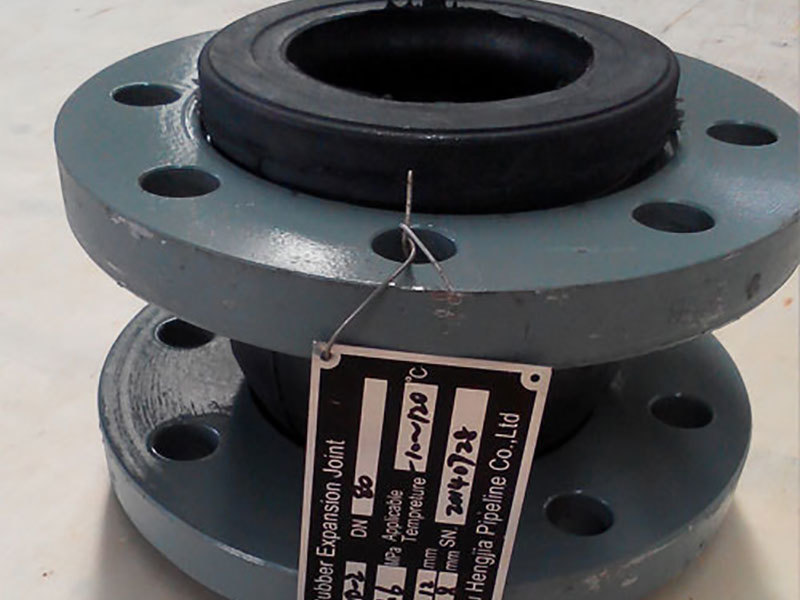Exploring the Advantages of Plate Flat Welding Flanges in Industrial Piping Systems
Release time:
2025-10-21
Exploring the Advantages of Plate Flat Welding Flanges in Industrial Piping Systems Industrial piping systems are crucial for the efficient transportation of fluids, gases, and other materials in various industries, including petrochemical, food processing, and water treatment. Among the essential components of these systems are flanges, which provide a reliable means of joining pipes and equipmen
Exploring the Advantages of Plate Flat Welding Flanges in Industrial Piping Systems
Industrial piping systems are crucial for the efficient transportation of fluids, gases, and other materials in various industries, including petrochemical, food processing, and water treatment. Among the essential components of these systems are flanges, which provide a reliable means of joining pipes and equipment. One type that stands out for its versatility and strength is the **plate flat welding flange**. This article aims to explore the advantages of plate flat welding flanges, emphasizing their importance in modern industrial applications.
Table of Contents
- Understanding Plate Flat Welding Flanges
- Design and Construction Materials
- Applications in Industrial Piping Systems
- Benefits of Using Plate Flat Welding Flanges
- Installation and Maintenance
- Cost-Effectiveness and Durability
- Comparison with Other Flange Types
- Future Trends in Flange Technology
- Frequently Asked Questions
Understanding Plate Flat Welding Flanges
Plate flat welding flanges are circular plates with a flat surface designed to connect pipes, valves, pumps, and other equipment in piping systems. They are typically made from durable materials such as carbon steel, stainless steel, or alloy steel, allowing them to withstand high-pressure and high-temperature environments. The flanges are welded to the end of a pipe or piece of equipment, creating a robust joint that can handle significant stress and strain.
How Plate Flat Welding Flanges Work
The fundamental principle behind plate flat welding flanges is simple: they create a secure connection by joining two surfaces through welding. The process involves aligning the flange with the pipe, ensuring proper alignment, and then applying heat to fuse the materials together. Once cooled, this fusion results in a strong, permanent bond that is critical for maintaining the integrity of the piping system.
Design and Construction Materials
The design of plate flat welding flanges can vary depending on the application and industry requirements. They come in various sizes, thicknesses, and pressure ratings, which are determined by the specific needs of the piping system. The choice of construction materials is equally important, as it affects the flange's durability, corrosion resistance, and overall performance.
Common Materials Used
- **Carbon Steel:** This is a widely used material in industries where strength and durability are paramount. Carbon steel flanges are cost-effective and suitable for general use.
- **Stainless Steel:** Known for its excellent corrosion resistance, stainless steel flanges are ideal for environments that involve exposure to moisture or corrosive substances.
- **Alloy Steel:** These flanges are designed for high-strength applications and extreme temperature environments. They offer enhanced durability compared to standard steel types.
Applications in Industrial Piping Systems
Plate flat welding flanges are utilized across various industries due to their adaptability and reliability. Below are some common applications:
Petrochemical Industry
In the petrochemical sector, plate flat welding flanges are essential for connecting pipelines that transport crude oil, natural gas, and refined petroleum products. Their robust design ensures safe and efficient operations in high-pressure environments.
Water Treatment Facilities
Water treatment plants rely on plate flat welding flanges to join pipes and equipment involved in the filtration and purification processes. The corrosion-resistant properties of stainless steel flanges make them a preferred choice in these applications.
Food and Beverage Processing
In the food and beverage industry, hygiene is paramount. Plate flat welding flanges made from stainless steel are often used in sanitary piping systems to ensure that the integrity of the food products is maintained.
Benefits of Using Plate Flat Welding Flanges
The advantages of plate flat welding flanges extend beyond their basic functionality. They offer substantial benefits that enhance operational efficiency and safety in industrial piping systems.
1. Enhanced Strength and Stability
One of the primary advantages of plate flat welding flanges is their superior strength. The welded connection provides a level of stability that is crucial when dealing with high-pressure systems. This strength minimizes the risk of leaks and failures, ensuring a reliable operation.
2. Versatility in Applications
Plate flat welding flanges can be used in a wide variety of applications and environments. Their adaptable design allows them to be integrated into different piping systems, making them a versatile choice for various industries.
3. Cost-Effectiveness
While the initial investment in high-quality plate flat welding flanges may be higher, their durability and low maintenance needs result in long-term cost savings. The reduced likelihood of leaks and failures minimizes downtime and repair costs.
4. Ease of Installation
Installing plate flat welding flanges is a straightforward process, particularly for experienced welders. Their design allows for easy alignment and welding, facilitating quicker project completion and reducing labor costs.
5. Improved Safety
In industrial settings, safety is a top priority. The robust design of plate flat welding flanges helps prevent catastrophic failures that can lead to accidents, ensuring a safer working environment for employees.
Installation and Maintenance
Proper installation and maintenance of plate flat welding flanges are critical to ensuring their longevity and functionality within a piping system.
Installation Guidelines
1. **Preparation:** Ensure all surfaces are clean and free of contaminants to achieve optimal weld quality.
2. **Alignment:** Properly align the flange with the pipe or equipment to prevent misalignment during the welding process.
3. **Welding Techniques:** Utilize appropriate welding techniques and materials to achieve a strong bond. Common methods include TIG and MIG welding.
Maintenance Practices
Regular inspections should be conducted to identify any signs of wear or fatigue. Cleaning the flanges periodically can also help prevent corrosion, especially in environments with high moisture levels.
Cost-Effectiveness and Durability
Investing in plate flat welding flanges can yield significant long-term cost benefits. Their durable construction means they can withstand harsh conditions without the need for frequent replacements.
Long-Term Financial Benefits
The initial cost may be higher compared to other flange types, but the durability and reduced maintenance requirements contribute to overall savings. Industries that prioritize long-term reliability often prefer plate flat welding flanges for this reason.
Comparison with Other Flange Types
When selecting the right flange for an industrial piping system, it’s essential to understand how plate flat welding flanges compare to other types, such as slip-on and blind flanges.
1. Slip-On Flanges
Slip-on flanges are easier to install but may not provide the same level of strength as plate flat welding flanges. They are suitable for lower-pressure applications but could pose risks in high-pressure environments.
2. Blind Flanges
Blind flanges are used to seal the end of a piping system and do not have a hole for a pipe. They provide a robust solution for preventing leaks but do not serve the same purpose as plate flat welding flanges in connecting pipes.
Future Trends in Flange Technology
As industries evolve and technology advances, the design and materials used in plate flat welding flanges are expected to continue improving. Innovations may include:
1. Advanced Materials
The use of composite materials and advanced alloys may enhance the performance of flanges, making them even more resistant to corrosion and temperature fluctuations.
2. Smart Technology Integration
The integration of smart technology in industrial piping systems can lead to improved monitoring and diagnostics. Smart flanges may offer real-time data on pressure levels, temperature, and potential leaks.
3. Sustainable Manufacturing Practices
As industries become more environmentally conscious, the move toward sustainable manufacturing practices will likely influence the production of plate flat welding flanges, focusing on reducing waste and energy consumption.
Frequently Asked Questions
1. What are plate flat welding flanges?
Plate flat welding flanges are circular plates designed for welding to pipes and equipment in industrial piping systems, providing a secure and robust connection.
2. What materials are used for manufacturing these flanges?
Common materials include carbon steel, stainless steel, and alloy steel, chosen for their strength and corrosion resistance.
3. What industries commonly use plate flat welding flanges?
These flanges are widely used in the petrochemical, water treatment, and food processing industries.
4. How do I install plate flat welding flanges?
Proper installation involves cleaning surfaces, aligning the flange with the pipe, and utilizing appropriate welding techniques.
5. Are plate flat welding flanges cost-effective?
Yes, while they may have a higher initial cost, their durability and low maintenance needs lead to long-term savings.
Conclusion
Plate flat welding flanges are an integral component in modern industrial piping systems, offering numerous advantages that enhance operational efficiency, safety, and cost-effectiveness. Their robust design, versatility, and ease of installation make them a preferred choice across various industries. As technology advances, we can expect further innovations that will continue to improve the performance and reliability of these critical components in piping systems. Investing in high-quality plate flat welding flanges today will ensure a robust and efficient piping system for years to come.
Key words:
Related News






